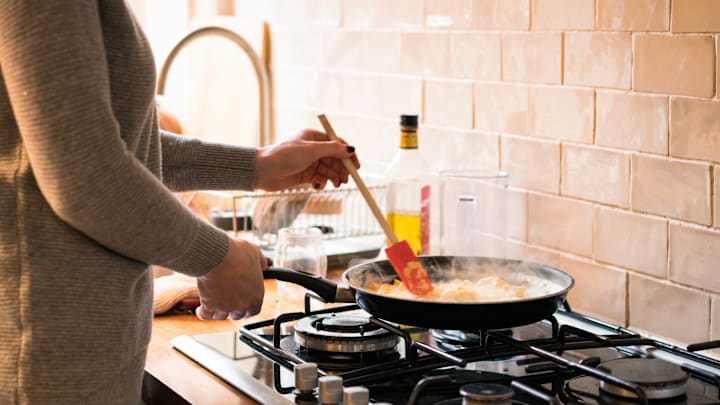Over the years, there’s been a fun debate on social media over which burner people prefer when using a four-burner stove. It’s one of the strange quirks of adulthood that we tend to have a “favorite” and “least favorite” burner. (Anybody out there use the back left? Yeah, we didn’t think so.)
It might surprise you, however, that the arrangement of differently-sized burners isn’t random. Each one has an intended purpose, depending on the meal you’re cooking, and it's placed there for a reason.
What is each burner called?
The largest burner is called a “power burner,” and it’s specifically designed for searing meats and boiling water quickly. The medium-sized burners are “all-purpose” or “standard” burners. And the smallest burner, which is known as a “simmer burner,” is designed for low-flame cooking (think delicate work like tempering chocolate).
You’ve probably noticed that, on many stovetops, your simmer burner is placed somewhere in the back while the power burner sits up front. (The standard burner is a wildcard.) There’s a safety reason for this arrangement: When you’re cooking, you rarely want to reach over an open flame. Items that are simmering generally require less attention than items being cooked on a power burner, so the simmer burner often gets relegated to the back of the stovetop. (Think of the arrangement as mealtime triage.)
Why are stovetops laid out like that?
Believe it or not, a lot of thought has probably been put into this placement. The ergonomics of stovetop design is a real (and surprisingly complicated) field. Have you ever placed a pan on an electric stove and turned the knob only to realize 10 minutes later that you twisted the wrong control? “The four-burner stove problem is an outstanding issue in ergonomic design,” researchers complain in the journal Ergonomics. (Most ergonomic studies, however, focus less on the arrangement of the burners and more on where the control knobs should be located—and which hotplate those knobs should control {PDF}.)
What’s a warming drawer?
And it turns out that the stovetop isn’t the only surprise lurking in your kitchen. You know that drawer underneath your oven? It’s not there for storing stray pots, pans, and cookie sheets. Depending on the model, that might be a warming drawer. You may be able to use it as a drawer for proofing dough (a.k.a. a "proving drawer" for fans of The Great British Baking Show) or as a space to keep cooked meals warm before suppertime.
As one owner’s manual reportedly states: “The warming drawer is designed to keep hot foods at serving temperature. Always start with hot food. Cold or room-temperature foods cannot be heated, warmed, or cooked in the warming drawer. Bacteria will grow very rapidly in food that is between 40 and 140 degrees Fahrenheit.”
Read More Stories About Kitchens and Home:
A version of this article was originally published in 2018 and has been updated for 2025.
